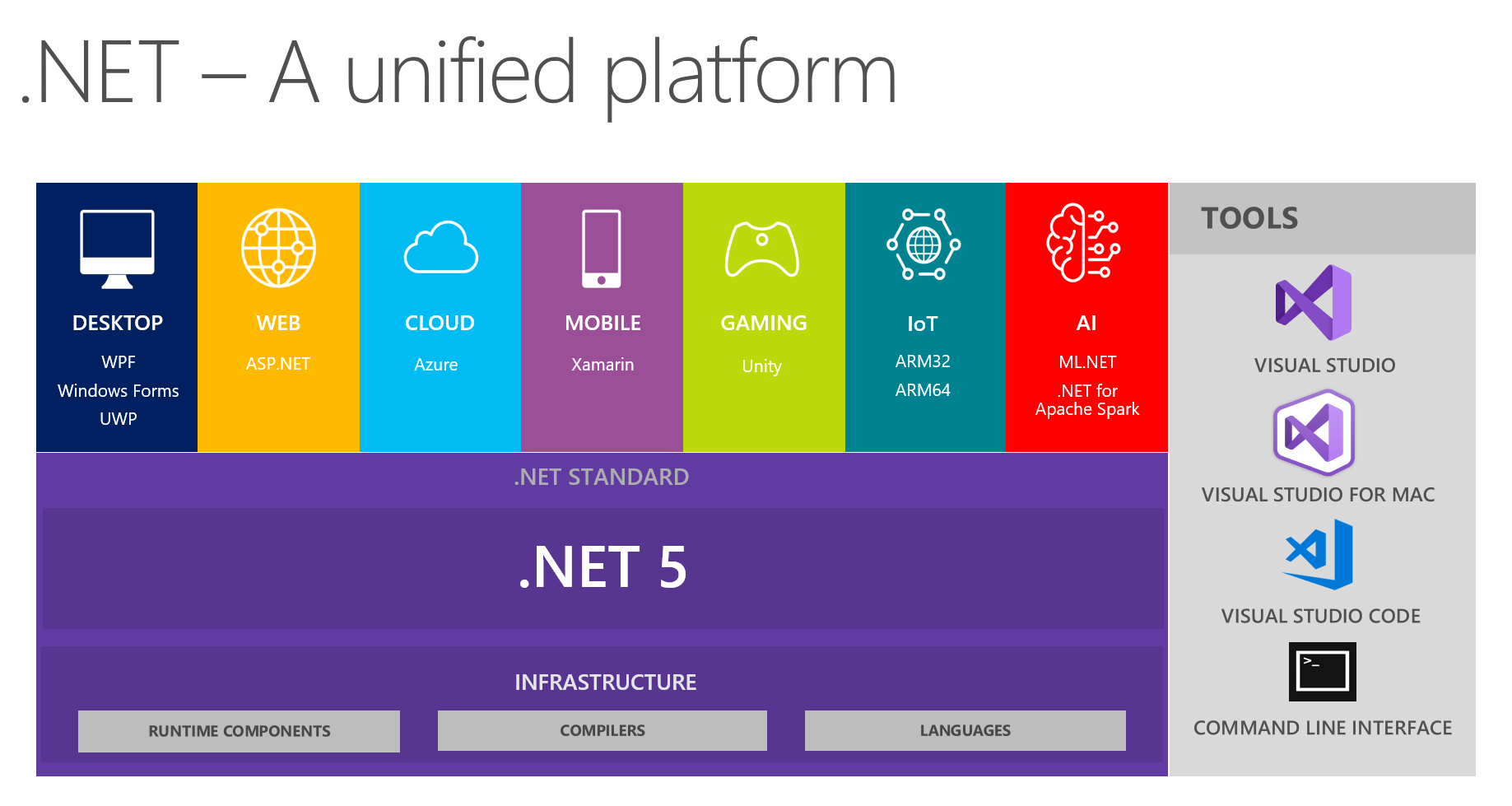What's new in .NET 5?
September 2020 marked the release of .NET 5 RC1, with a release for first stable version in November 2020. But what is .NET 5 and why should you care?
A unified .NET
One of the goals with .NET 5 was to create one .NET platform. Fusing .NET Framework, .NET Core and Mono/Xamarin into one. There will only be one SDK. No matter if you’re making a desktop application, a web API or a mobile application - you’ll be using the same base class libraries and common APIs.
 Illustration courtesy of Microsoft
Illustration courtesy of Microsoft
Performance improvements
- 30% socket performance improvement on Linux over .NET Core 3.1
- 19% Json serialization performance improvement over .NET core 3.1
- 300% improvement in serialization of large collections and arrays – whilst not allocating any memory doing this thanks to the new zero alloc feature
- Significant improvements to the System.Text.Json API
- gRPC server performance exceeds Go, C++ and Java
Other new features in .NET 5
- Support for C# 9 and F# 5
- Introducing the ‘record’ keyword – a C# 9 feature allowing you to easily create immutable types
- Smaller container image sizes
- Support for ARM64 architecture
- Greater support for assembly trimming – allowing unused types and members to be removed and thereby reducing the size of your applications
- Single file applications. Applications that can be compiled within themselves without any version of .NET being installed on the machine(?!)
- Out of the box OpenAPI support for web APIs
- HttpRepl, allowing you to test and debug your APIs via command line
What’s next?
Microsoft will now try to make their releases of .NET more cyclic. Starting with .NET 5 in November 2020, Microsoft aims to release a new version of .NET every November. Even version numbers will also have long time support. This means that the version will have guaranteed support for a minimum of 3 years after release. If you’ve installed Visual Studio 2019 v16.8 Preview 3 on your machine, .NET 5 RC1 can be downloaded here.
Happy coding!